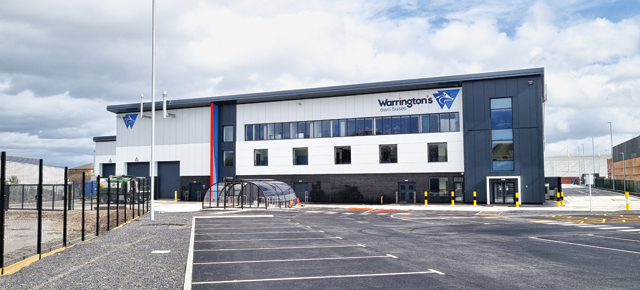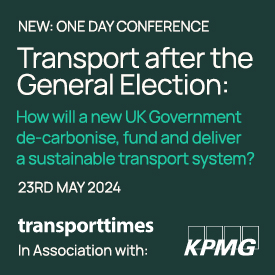Janus Architecture has found itself at the forefront of efforts to decarbonise passenger transport
As an architectural practice with over two decades specialising in bus depots, Janus Architecture has now found itself at the forefront of the efforts to decarbonise passenger transport and introduce “cleaner bus” integration across the UK.
Working with several bus operators over more than 20 years we have delivered numerous depot facilities both “new build” and refurbishments projects on existing sites. This has given us the unique and specialist knowledge base as an architectural practice in which to assist in the integration of both electric and hydrogen zero emission vehicles.
In an era of rapid urbanisation and growing environmental concerns, the need for sustainable transportation solutions has become more critical than ever. Among the various modes of public transport, buses stand out as a significant contributor to carbon emissions and air pollution. However, a paradigm shift is underway as cities around the world are embracing electrification and other green alternatives to power their bus fleets.
Electrifying public buses in either the full electric or hydrogen electric form is a vital step toward achieving global climate goals
Electrifying public buses in either the full electric or hydrogen electric form is a vital step toward achieving global climate goals. The transportation sector is a significant contributor to greenhouse gas emissions, and transitioning to electric drive buses can significantly reduce carbon footprints. With each electric or hydrogen bus replacing a conventional diesel-powered vehicle, the overall emissions associated with public transport can be dramatically curtailed, making significant strides towards a greener future.
Two of our earliest projects relating to “decarbonising passenger transport” were the first purpose-built hydrogen bus maintenance facility at Lea Interchange, Stratford – in 2012. This was followed by the integration of “first-generation” electric buses in York, 2015. Our journey has continued onwards with an ever-increasing portfolio of projects that integrate either full electric or hydrogen electric buses into depots.
Significant challenges
The decarbonisation of depots with either hydrogen electric or electric buses can present significant challenges to bus operators, especially within existing facilities.
One of the primary concerns of operators introducing electric buses is the loss of overall parking space for the fleet. Our experience to date is primarily with “plug in” electric buses. The integration of these in a depot normally involves new “island zones” for chargers which diminish overall parking space and capacity.
The introduction of necessary high voltage equipment such as RMU switches, transformers, and low voltage control panels, also takes precious space and needs to be considered from the outset.
Over the years we have introduced innovative solutions with our clients such as overhead gantries, with drop down charging reels at First Bus’s Leicester depot. Also, at Leicester where a depot yard was relatively new we avoided unsightly trenching digs through the introduction of above ground containment of cables, with new infrastructure simply bolted to existing slabs.
We utilised this principle for charging 120 electric buses at the existing depot at Caledonia in Glasgow ahead of the COP26 summit. Future phases are to be planned and will see the site become able to accommodate and charge up to 400 electric buses which will see First Bus’s Caledonia Depot become the UK’s largest electric facility.
Even our latest new build depots at Warrington and Perry Barr have been designed for future electrification in mind. Cable containment, charger zones and other spatial requirements were considered. Warrington bus depot is the new home of Warrington’s Own Buses and has been designed for 120 electric buses all designed with plug-in DC chargers.
With hydrogen electric buses the complexity of challenges is no less – but just different. With the exception of the earlier first-generation buses there is no need to plug the buses in for charging. This results in a parking capacity similar to a diesel-powered fleet. If the buses are parked externally the only limitation would be an external purge or degas zone which can be located with minimal impact.
However, the maintenance and fuelling functions present numerous challenges. Our first experience of a dedicated facility was at Lea Interchange, Temple Mills Lane, Stratford.
This was the UK’s first purpose-built Hydrogen Bus Combined Fuelling and Maintenance Facility and was completed prior to the 2012 London Olympics.
It was preceded by a trial Fuel Cell Bus Vehicle Maintenance Facility at Hackney in 2003, the CUTE Project (Clean Urban Transport for Europe). The trial was successful and allowed comparisons between the fuel cell bus and diesel buses. Project partners included London Buses, FirstGroup, Daimler Chrysler and BOC.
Transport for London and FirstGroup re-engaged Janus to act as their advisors on the new Hydrogen Fuel Cell Bus Maintenance Facility at Lea Interchange. The project included sustainable features such as ground source heat pumps and specific areas of knowledge such as:
- Integration of specialist fuelling requirements and features for the project partners (Air Products).
- Higher level security requirements for Liquid Hydrogen Storage.
- Safety requirements and HSE involvement due to presence of hydrogen.
- Project specific design requirements – e.g., intrinsically safe electrical requirements, emergency, and high-pressure venting systems.
The project was delivered on programme and within budget. Project partners included Transport for London, FirstGroup, and Air Products.
More recently we were involved with a “maintenance only” facility in Walsall for National Express West Midlands. They took possession of their facility in December 2021 and currently operate 20 first generation hydrogen electric buses.
The new facility incorporates “intrinsically safe” maintenance bays located within the depot workshop. The internal bays can accommodate two buses in a tandem arrangement and includes lighting, power, compressed air services. The enclosure also includes full hydrogen leak detection linked to roof mounted extracting fans.
To protect the fuel cell technology of the bus in low temperatures, this first generation of hydrogen bus required the installation of external retractable electrical leads for a “plug-in” capability.
We have successfully delivered hydrogen fuel cell vehicle maintenance and fuelling facilities. We have experienced a steep learning curve on our hydrogen projects and together with our design partners understand that a clear understanding of HSE and DSEAR requirements is essential to success. The intricacies and knowledge of blasts zones, intrinsically safe equipment, detection, and venting equipment are also a key to success.
Hydrogen bus integration is an emerging technology in the UK market, and our team are currently involved in the early design stages on projects for national bus operators and regional governmental organisations.
Summary
At Janus we have the same approach to any project whether it be for a full electric or hydrogen bus integration.
Our skill base in bus depots allows us to prepare designs and optimal bus parking layouts for each individual site. This can provide a bus operator with the opportunity to realise minimal reduction in fleet capacity or for strategic assessment when route bidding across several sites for example.
As with any infrastructure or construction project there are always statutory hurdles to overcome. Our architectural experience in dealing with planning and building control permissions is vital to achieve these decarbonising passenger transport projects.
Obviously challenges are site specific, but we are finding that planning permission for example is now required for the simplest electrification project
Obviously challenges are site specific, but we are finding that planning permission for example is now required for the simplest electrification project and can generate the need for extensive third-party reports such as acoustics and ecology requirements.
In our all commissions we focus on the same key principles:
- Identify each site’s stabling capacity and current fleet profile and mix of buses.
- Carry out a site visit/walk around study for each depot to understand current parking regime, manoeuvre and spacing of buses.
- Attend a briefing meeting with depot staff to fully understand operations-run/in-run/out schedules (weekday and weekend).
- Provide accurate parking plans with vehicle manoeuvres validated by Auto Track software.
- Strive to provide the most economical solution to achieve the brief. Awareness of bus operator’s limited budgets.
As urban populations continue to grow, the imperative for sustainable public transport solutions becomes increasingly urgent. Electrification stands at the forefront of this revolution, offering an array of environmental, societal, and economic advantages. By embracing electric buses and other green power alternatives, cities can significantly reduce emissions, mitigate climate change, improve air quality, and promote technological innovation.
At Janus we understand that developing a close relationship with our client is paramount to the success of any project. We have a proven track record within the bus industry and have a unique specialisation in transport projects.
The path to a sustainable future requires bold action and collaborative efforts from governments, transportation authorities, and the private sector. Through the electrification of public transport, we at Janus are hopefully contributing towards a cleaner, healthier, and more sustainable tomorrow.
FIND OUT MORE: janusarchitecture.co.uk
This article appears in the latest issue of Passenger Transport.
DON’T MISS OUT – GET YOUR COPY! – click here to subscribe!









